“ The Irresistible Charm of Brazilian Cheese Bread (Pão de Queijo) Series".
Brazilian Cheese Bread, or * Pão de Queijo*, is more than just a simple bread; it's a culinary experience. These delightful, cheesy goodness boast a uniquely chewy texture and an irresistible savory flavor, making them a beloved staple in Brazilian cuisine and a popular treat worldwide.
INSPIRATIONAL FOOD
1/12/20256 min read

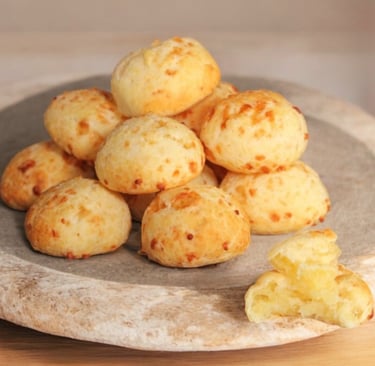
* More Than Just a Snack: A Cultural Icon *
Pão de queijo transcends its role as a mere snack or side dish. Deeply embedded in Brazilian culture, it serves as a comforting taste of home for many Brazilians and a delightful introduction to Brazilian cuisine for newcomers. Its versatility shines through—enjoyed warm from the oven, slightly cooled, making it a perfect addition to any meal or occasion, from a casual breakfast to a more formal gathering. Its enduring popularity, from its humble beginnings as a staple in Brazilian homes to its current status as a globally beloved treat, is a testament to its simple yet captivating charm.
* More Than Just Bread *
The name “ Pão de Queijo “ translates literally to “ Cheese Bread, “ but the reality is far richer. Unlike most breads, it relies on Tapioca Flour (Polvilho Azedo & Doce) as its primary ingredient. This gives Pão de Queijo its characteristic stretchy, slightly chewy texture. Tapioca Flour, derived from the Cassava Root, creates that signature melt-in-your-mouth quality, completely distinct from the experience of traditional wheat bread. The addition of Cheese—often a firm variety like Parmesan, Minas cheese (a popular Fresh Brazilian White Cheese), or the most popular choice Mozzarella—provides a savory depth that beautifully complements the tapioca's subtly tangy notes. The combination of these ingredients results in a bread that's both satisfyingly substantial and surprisingly light. My personal cheese combination are Mozzarella and Parmesan.
* The Magic of Tapioca Flour *
Tapioca Flour is the undeniable star of Pão de Queijo. Its starches react differently than wheat flour during baking, producing a bread that's simultaneously soft, chewy, and slightly crumbly. The inherent slight acidity of the tapioca flour also contributes significantly to the unique, tangy flavor profile that many find so appealing. This acidity interacts with the cheese, enhancing its flavor and creating a complex, well-balanced tasty treat.
Let's expand on the difference between Polvilho Doce and Polvilho Azedo, the two types of Tapioca Starch crucial to understanding Brazilian cuisine, especially when it comes to Pão de Queijo. While both are derived from cassava root, their processing methods and resulting properties differ significantly, leading to distinct applications in cooking.
Polvilho Doce (Sweet Tapioca Starch)
Processing - Polvilho doce undergoes a gentler processing method. The Cassava Root is peeled, washed, grated, and then dried and ground. Crucially, it is not fermented. This lack of fermentation is what gives it its "Sweet" name, although it doesn't have a noticeably sweet taste in the way sugar does.
Properties - Is finer and lighter than Polvilho Azedo. It has a neutral flavor and a softer texture. It absorbs less liquid than Polvilho Azedo, resulting in a less chewy texture when baked.
Uses: - Is commonly used in lighter, crispier preparations. It's a popular ingredient in:
Biscuits and cookies Its fine texture and neutral flavor make it ideal for delicate baked goods.
Thickening agents It can be used to thicken soups, stews, and sauces, creating a smooth and creamy consistency.
Certain specific types of breads Though less common than Polvilho Azedo in breads, it can be used in recipes where a lighter, less chewy texture is desired.
Polvilho Azedo (Sour Tapioca Starch)
Processing - Polvilho Azedo undergoes a fermentation process. After the Cassava Root is processed (peeled, washed, grated, and dried), it is allowed to ferment, which introduces lactic acid. This fermentation step is what gives it its "Sour" or "Acidic" name.
Properties - Has a coarser texture than Polvilho Doce and possesses a slightly Sour or Tangy flavor. Its slightly acidic nature is what contributes to the unique flavor of Pão de Queijo. Because of the fermentation, it absorbs more liquid and creates a more elastic and chewy texture when baked.
Uses - Is essential for creating the signature texture of Pão de Queijo. Its unique properties also make it suitable for the following:
Certain types of breads - It produces a characteristically chewy texture.
Traditional Brazilian dishes - Many other traditional recipes rely on the slightly sour and chewy texture it provides.
While both starches originate from the cassava root, the fermentation process involved in making Polvilho Azedo drastically alters its properties, making it ideal for applications requiring a chewy texture and a slightly sour flavor, while Polvilho Doce is best for lighter, crispier applications. Understanding this distinction is vital for achieving successful results when baking with these flours.
* Beyond the Basics: Variations and Culinary Creativity *
The classic Pão de Queijo recipe is simple and delicious, yet its adaptability is a testament to its versatility. Countless variations exist, incorporating different cheeses, herbs, and spices to create unique flavor profiles. Some bakers add fresh herbs like chives or oregano for an extra layer of freshness, while others experiment with various cheeses, from the sharp bite of cheddar to the creamy richness of Gruyère. While less common, even sweet variations incorporating fruits or spices have emerged, showcasing the bread's surprising adaptability.
* Making Your Own Pão de Queijo: A Rewarding Culinary Adventure *
Making Pão de Queijo at home is surprisingly straightforward. Numerous recipes are readily available, catering to all skill levels, from beginner bakers to seasoned professionals. The key to success lies in properly hydrating the tapioca flour before baking. This crucial step ensures the proper texture and prevents a dry or crumbly final product. A little patience and attention to detail will yield incredibly rewarding results, allowing you to enjoy the freshly baked aroma and delightful taste of homemade Pão de Queijo*.
* Two Paths to Pão de Queijo Perfection: Blender vs. Manual Mix *
The preparation of Pão de Queijo offers flexibility, with two main approaches: using a blender or preparing it entirely by hand. Each method yields slightly different results, catering to different preferences and skill levels.
The Blender Method: This method is often favored for its speed and efficiency. A blender smoothly combines all ingredients, ensuring a perfectly consistent batter. This leads to more uniform Pão de Queijo with a smoother texture and potentially a slightly airier and crispy crumb. However, over-blending can result in a tougher final product. Careful attention to blending time is crucial to avoid this.
The Manual Mix Method: This traditional method involves manually mixing the ingredients. While it requires more time and effort, many believe it results in a more authentic texture and flavor. The manual mixing avoids the potential for over-processing that can occur with a blender. The slight variations in texture from the manual mixing often contribute to a more rustic charm and a chewier and denser final product. This method might be preferred by those seeking a more artisanal result.
So, Blender or Manual Mix? Honestly, there's no right or wrong way—both the blender and manual methods yield delicious results. The best approach depends entirely on your personal preference for texture and the amount of time you're willing to invest.
Embrace the adventure and discover the rewarding experience of making your own homemade Pão de Queijo.
The Sweet and Sour Polvilho (Tapioca Starch), I order from Amazon.
See bellow " Affiliated Links ", also listed in the shop page.
Yoki Sweet Cassava Starch (Polvilho Doce) - 1 Bag 500g -https://amzn.to/40szPHC
Yoki Sweet Cassava Starch (Polvilho Doce) - 3 Pack - 500g each- https://amzn.to/42bveuK
Yoki Sour Cassava Starch (Polvilho Azedo) - 1 Bag 500g -https://amzn.to/40x2AlB
Yoki Sour Cassava Starch ( Polvilho Azedo) -3 Pack - 500g each - https://amzn.to/40sqDDk

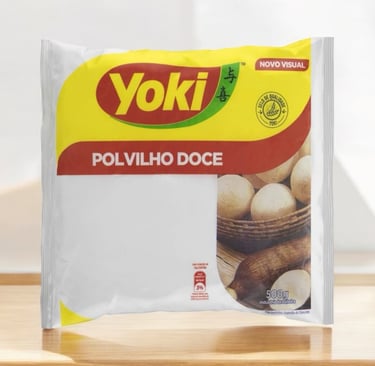
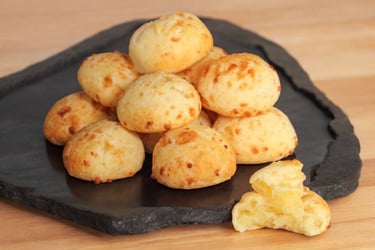


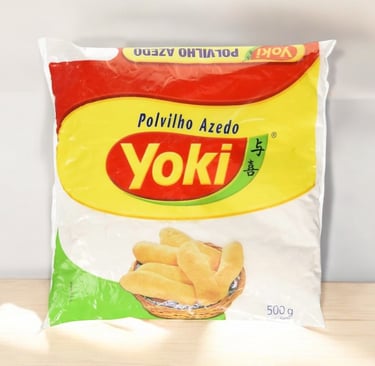






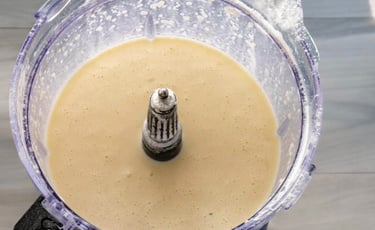



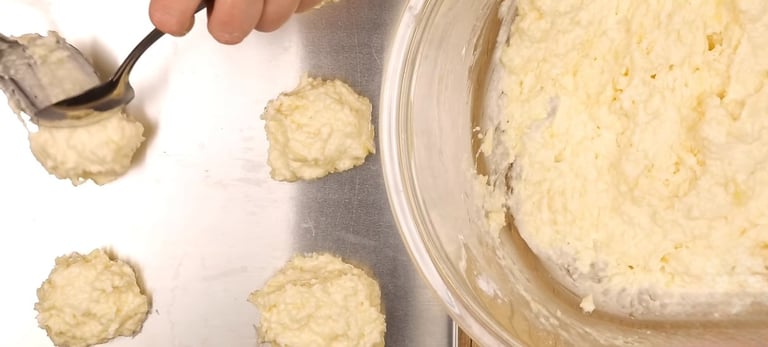

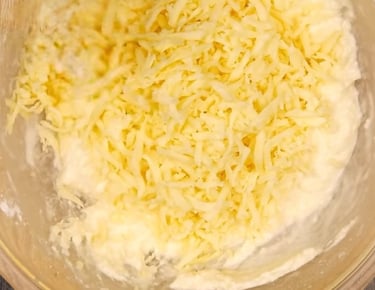

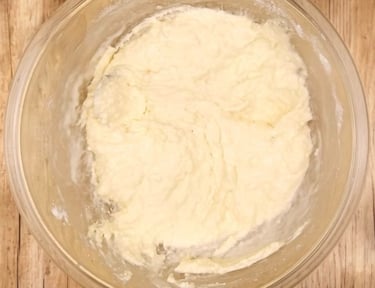


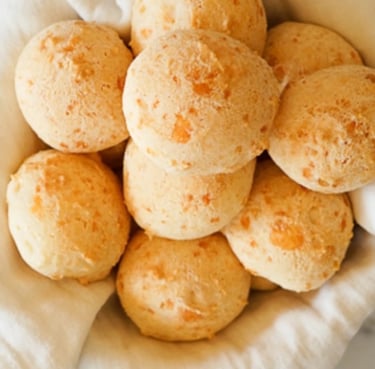

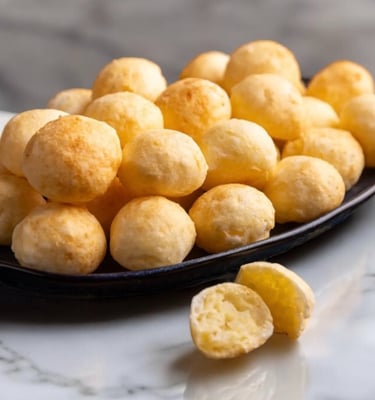

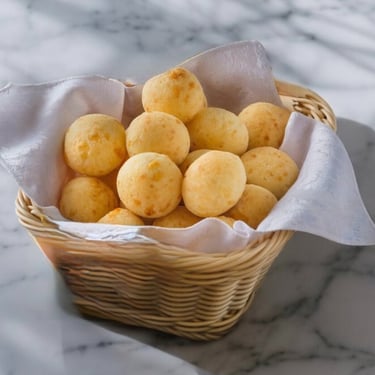

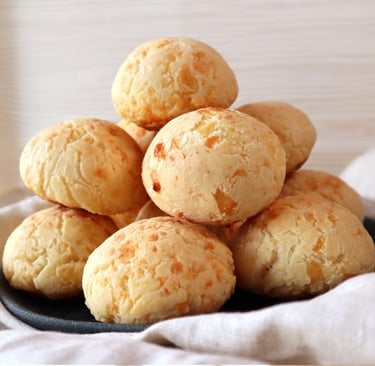
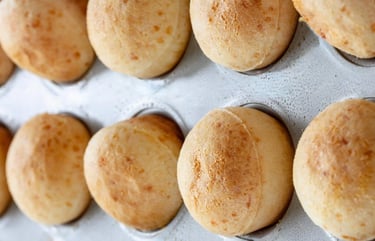


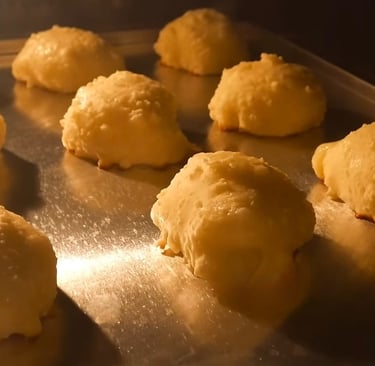
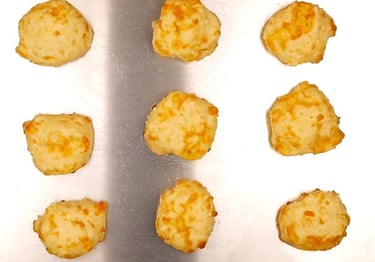

" Manual Mix "
" Blender Mix "
" Spoon Manual Mix"
